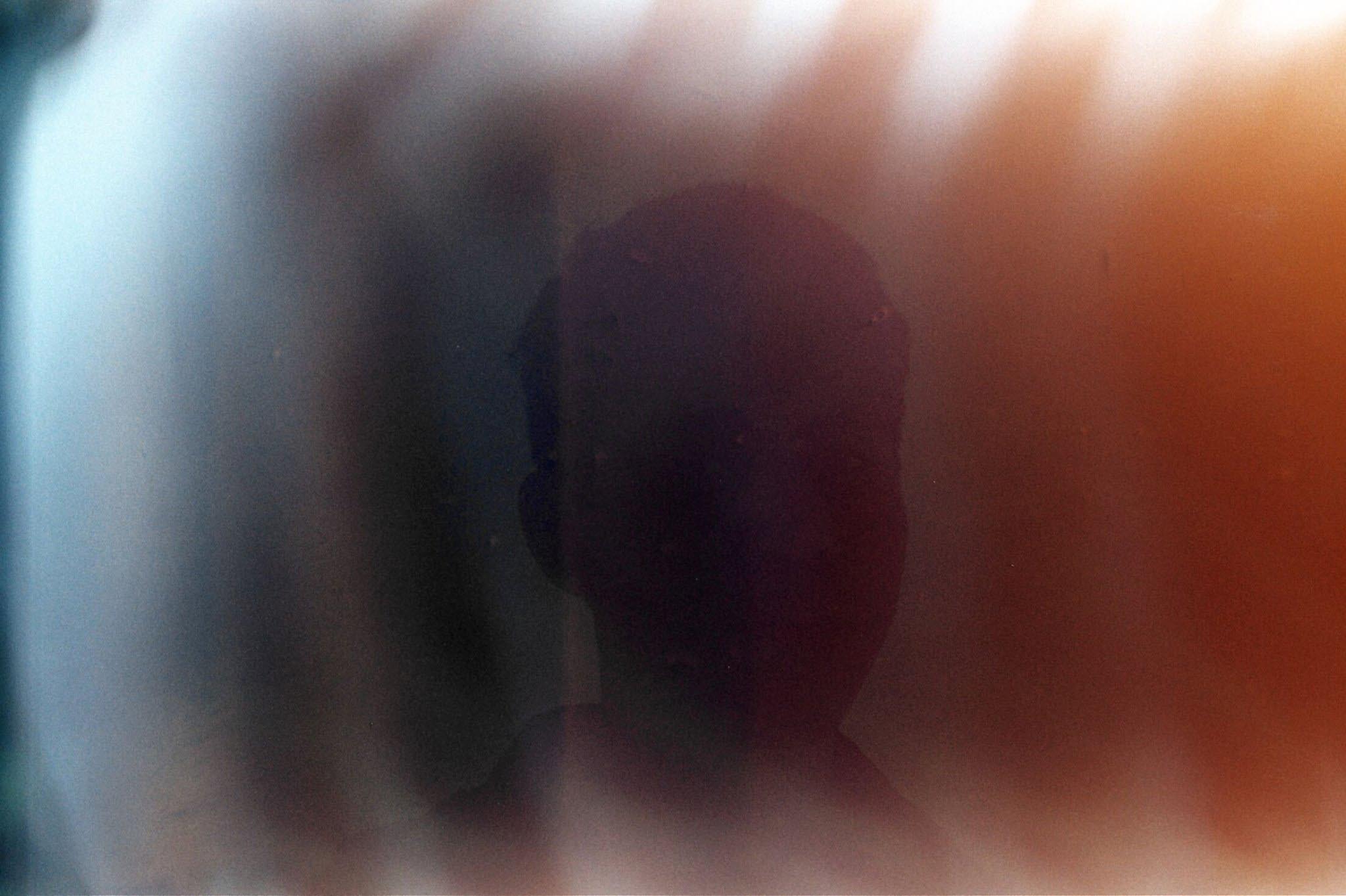
TOOLS#2: SOME LIKE IT HOT
How climatic conditions affect a project?
28 Oct 2018, Mexico City, Mexico
Have you noticed the different means and uses that span in a single architectural typology, depending on its cultural context? In Japan, a house is the protocolary connection between family members and Nature. Mexicans imagine their habitats as an open, modular space for super-sized families, while Europeans prefer to live in reduced and intimate homes. On the other hand, North African people tend to spend their lives in closed spaces, to avoid high temperatures. The conception of dwellings is attached to local materials, vernacular customs, geographic conditions, prosperity and climate.
Would it be possible that all those features are intimately linked, even mutually conditioned? Yona Friedman suggests that “slums would expend faster in regions where climate does not require sophisticated shelters than in rigorous-climate regions”. If that is true, what if culture, social interactions and even economical harshnesses*… all rely on climate?
Mexico is nearly as large as the European continent (from Spain to Ukraine); it has an array of climate conditions and radically different landscapes: desert, mountains, coasts, jungle, cool forests… This country is diverse in many aspects: economic, bioclimatic, social… Thus, architectural interventions are miscellaneous.
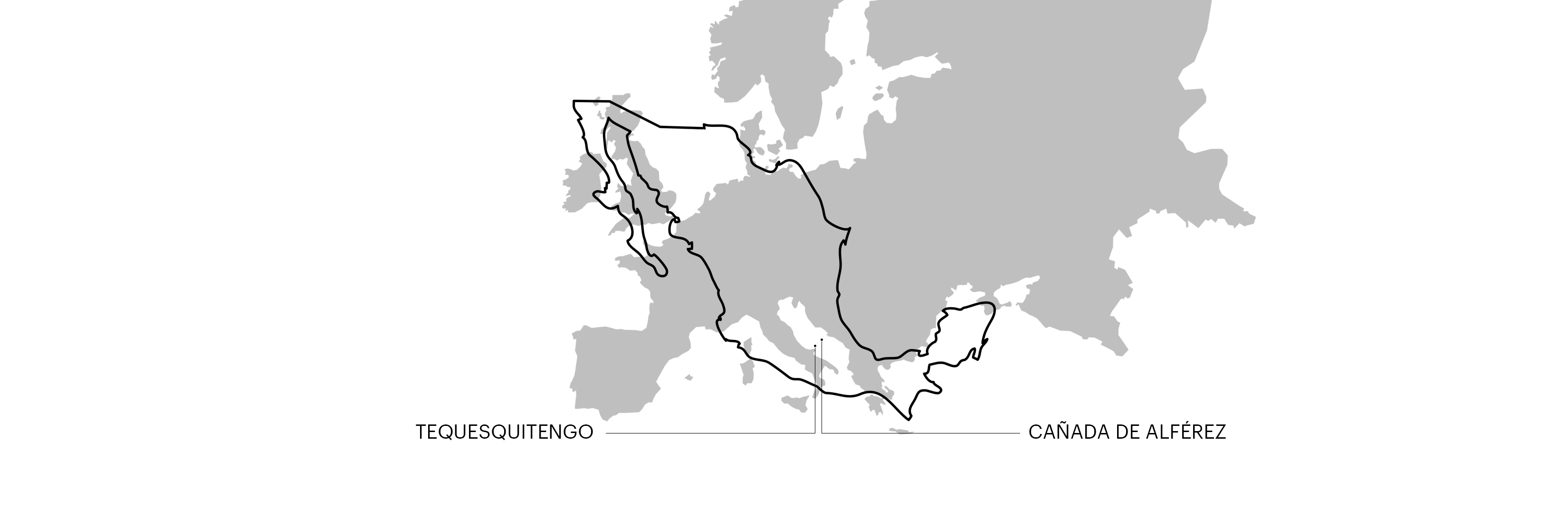
Recently, a rare opportunity opened up in SLOT: to work simultaneously on two holiday-house projects, in two different contexts: Tequesquitengo and Cañada de Alférez towns.
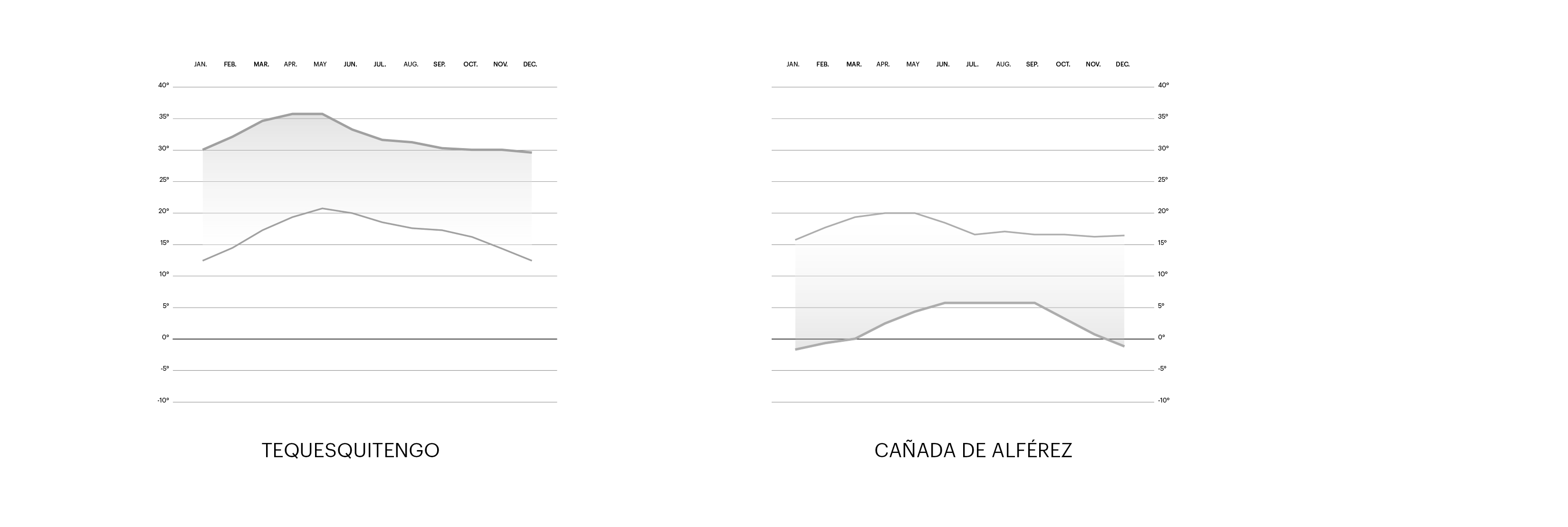
Averages of maximum & minimum temperatures in celsius, per year, from 1969 to 2015.
Despite their proximity, the climate conditions are truly different:
-Tequesquitengo is located on the shore of a big lake in the State of Morelos; its weather is warm and wet. The project area is in the edge of the lake and fully exposed to the West, 920 meters high over sea level. In some seasons, it can get flooded. Abundant showers are present, but also in a seasonal way.
-Cañada de Alférez is located in a Mexico City suburb, in the middle of ravines. Heavy winds usually blow, which give rise to a moderate cold atmosphere. The site is 2,930 meters high over sea level: sunlight is plentiful but the shade by the pine trees is thick. The average rainfall level is higher than London's.
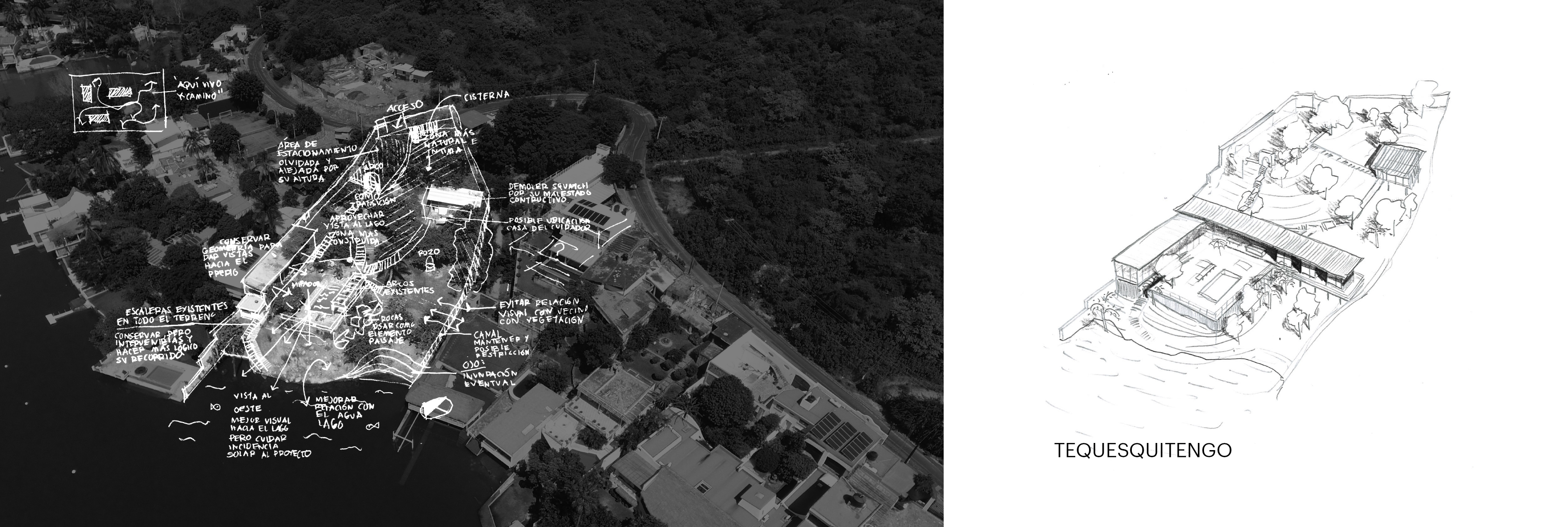
Analysis sketch of the area of Tequesquitengo and preliminary strategy: views, access, sunlight exposure, existing constructions, plants and trees locations, lake connection and neighborhood interactions.
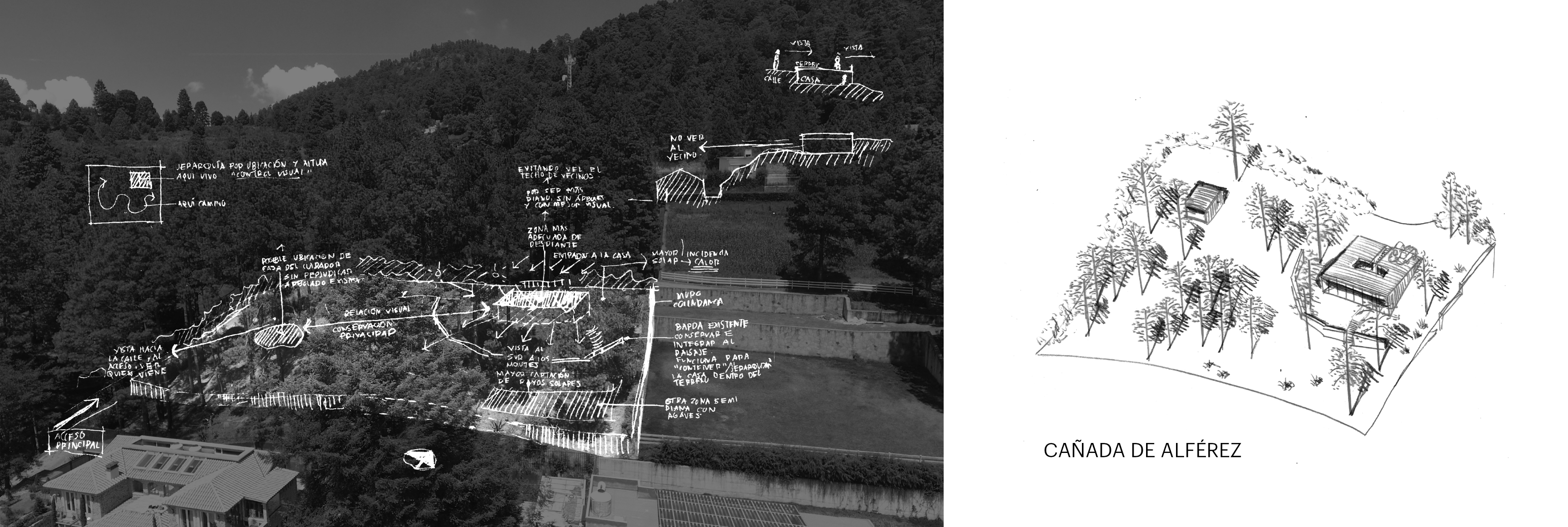
Analysis sketch of the area of Cañada de Alférez guesswork: views, access, sunlight exposure, existing plants and trees locations, woodland connection and neighborhood interactions.
BIOCLIMATIC STRATEGIES
For each case, we explored a suitable strategy. In Tequesquitengo, the goal was to create a cool place, a relief for high temperatures. In Cañada de Alférez, we wanted to keep the house warm, taking advantage of sunlight exposure.
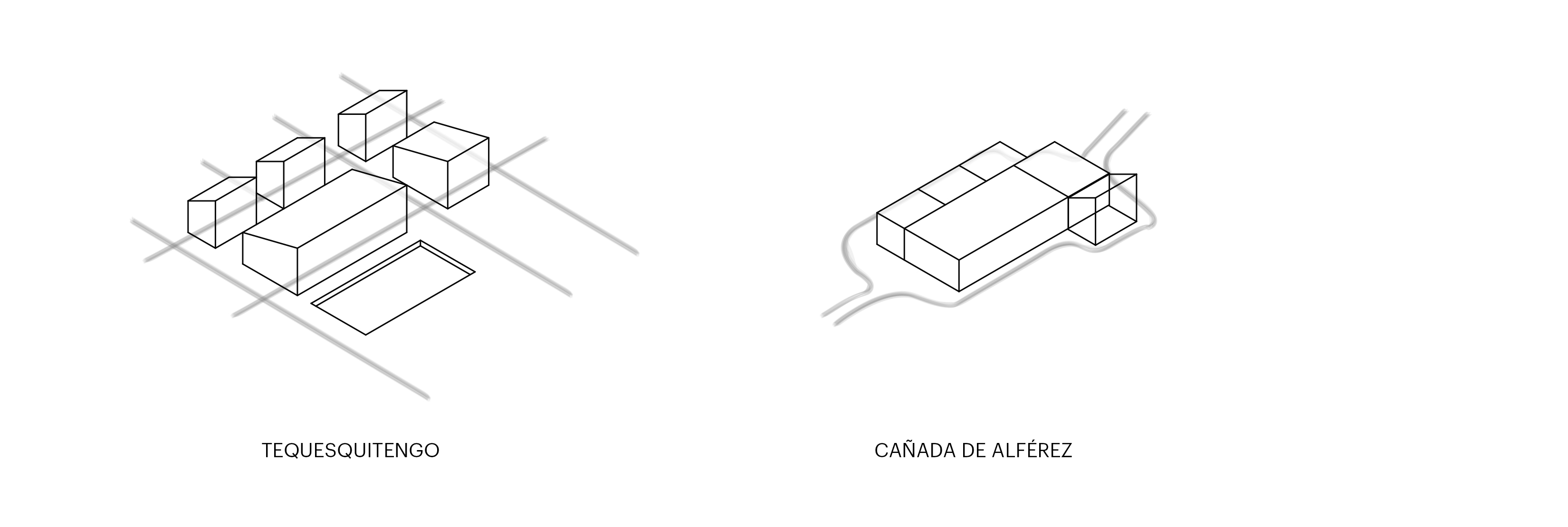
WIND CONSIDERATION
Tequesquitengo - Separated spaces could help wind to refresh each room.
Cañada de Alférez - Condensed spaces could generate a "carapace" against chill wind.
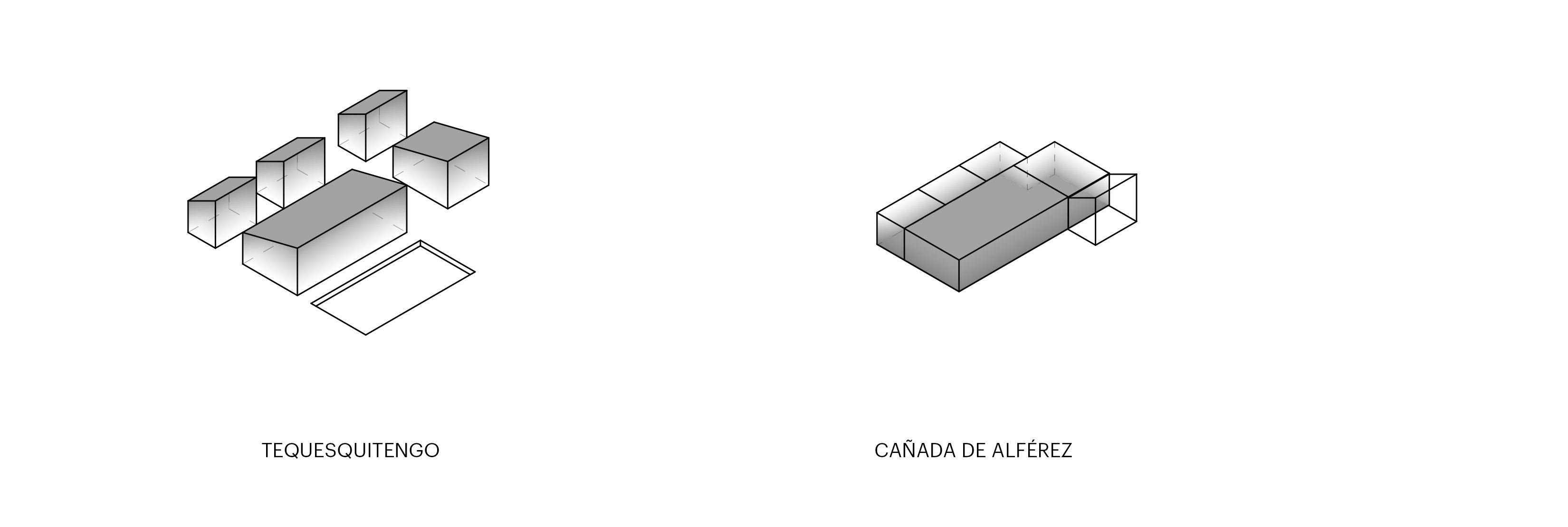
PROPORTIONS
Tequesquitengo - The higher the ceilings, the greater its capacity to dispel hot air.
Cañada de Alférez - To mantain warmth inside, the rooms should not be very high.
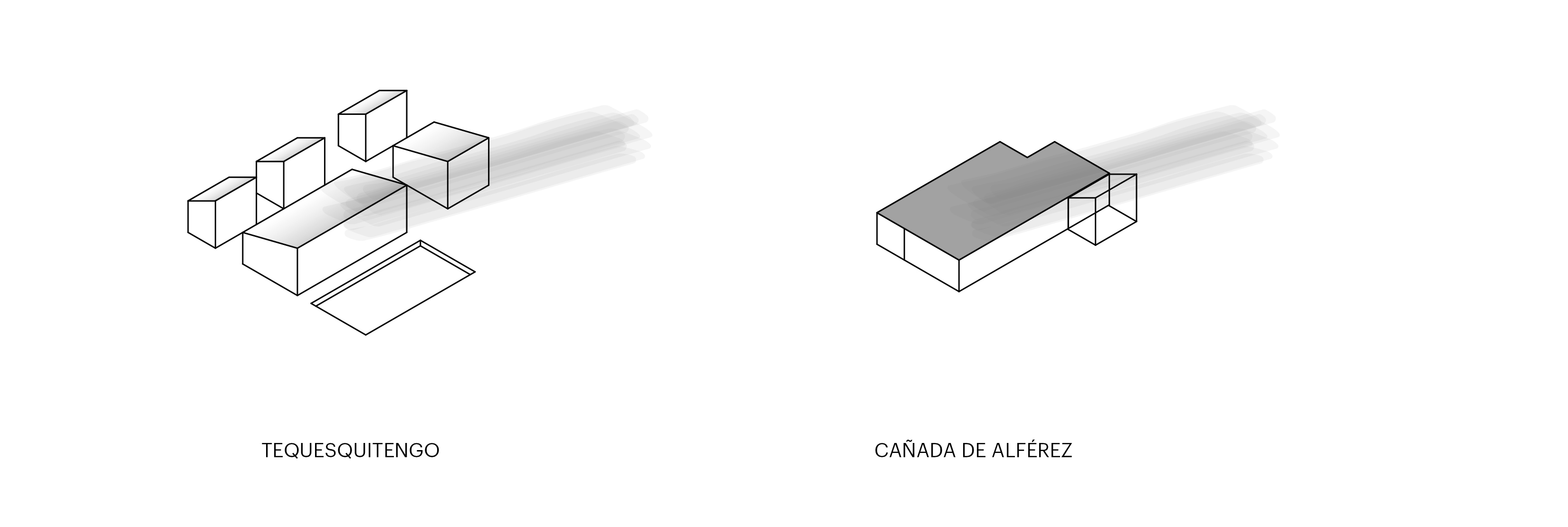
ROOFTOP SLOPE
Tequesquitengo - Oriented strategically, a sloping rooftop can mitigate excessive sunlight.
Cañada de Alférez - A flat rooftop can allow light to enter all the day long, and diffuse warmth inside.
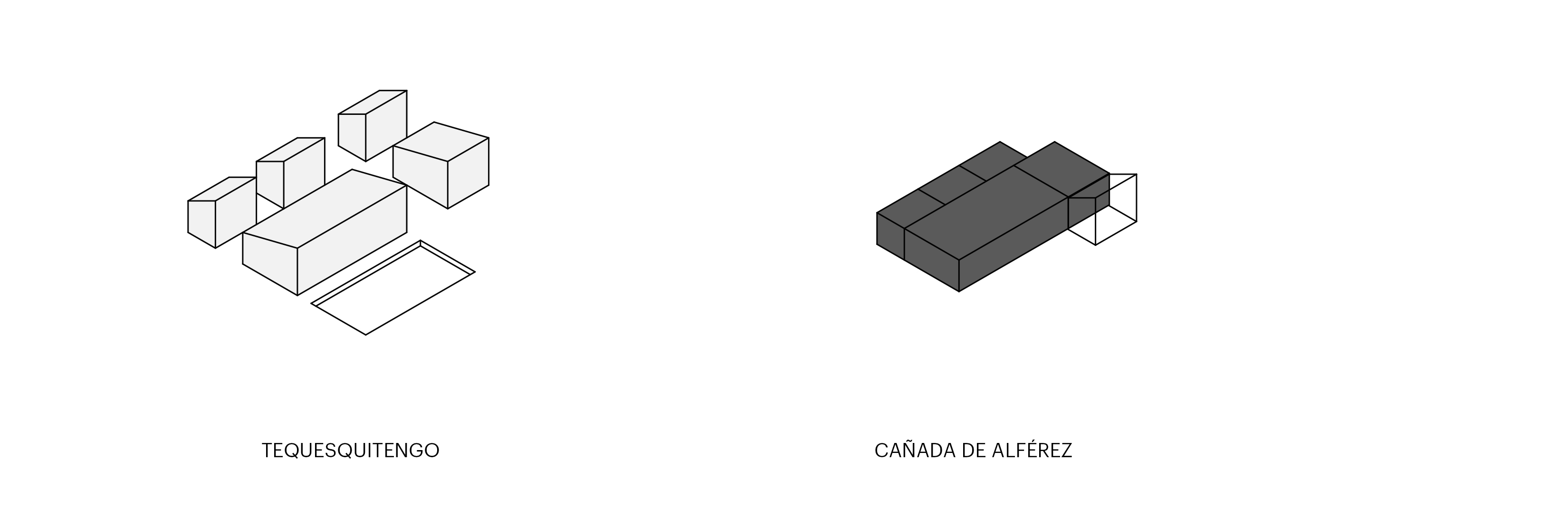
SELECTION OF MATERIALS
Tequesquitengo - Harsh sunlight asks for light colors in facades.
Cañada de Alférez - Dark-painted walls are more able to absorb heat.
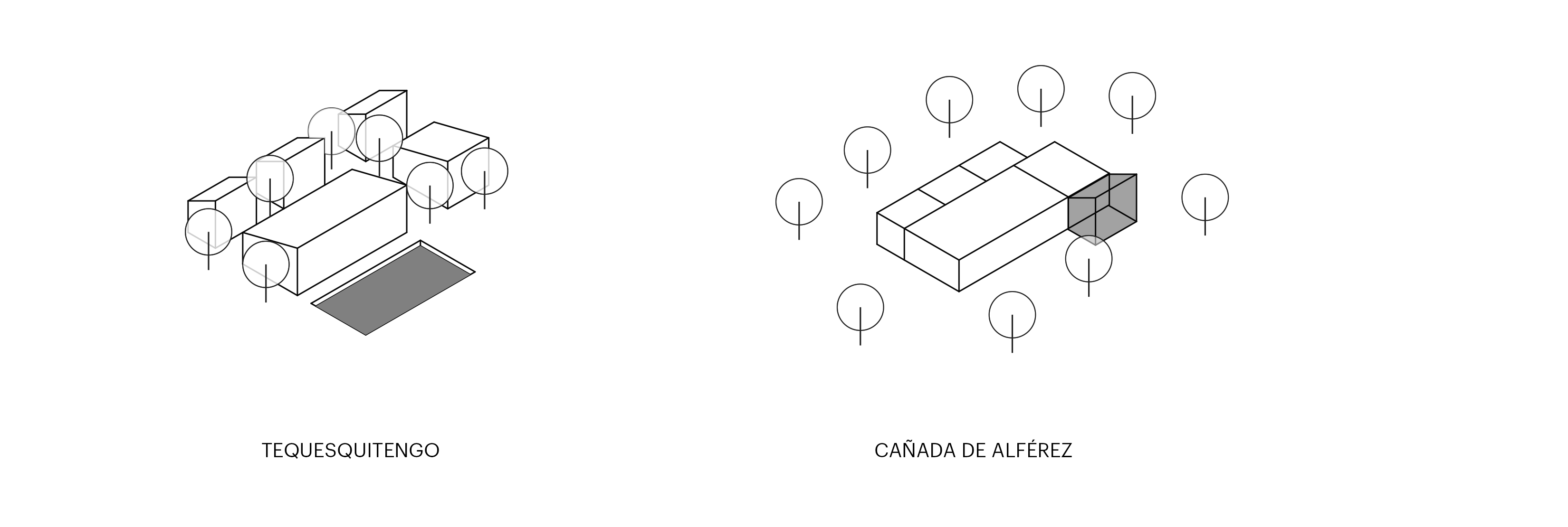
CONTEXT EXPLOITATION
Tequesquitengo - Existing swimming pool provides a cool enviroment and an existing tree generates strategic shades.
Cañada de Alférez - A construction separated from the trees, with glasshouses included, allows maximum sunlight.
- Original quote: “L’hypothèse que les bidonvilles s’étendront plus rapidement dans les régions où le climat n’exige pas des abris compliqués que dans les régions á climat rigoureux.” Yona Friedman from L’architecture de survie, une philosophie de la pauvreté, L’éclat, 2003, p.92.

Preliminary Research: Ana Laura Arista, Miguel Ángel Jiménez & Romain Roy-Pinot
Text: Romain Roy-Pinot & Pablo García
Graphic Design: Ana Laura Arista & Romain Roy-Pinot
